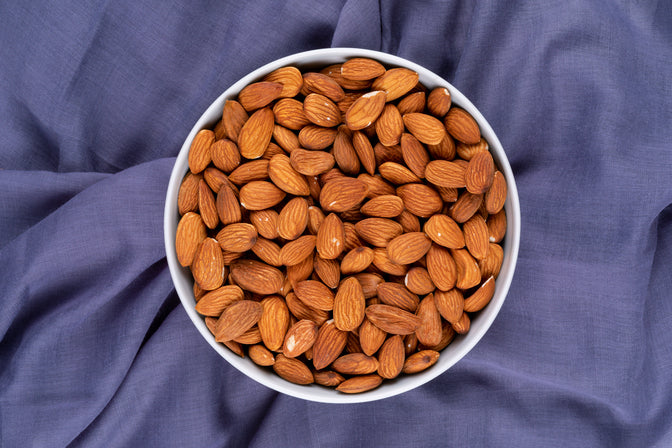
Exploring the Amazing Facts About Almonds
We all go nuts for almonds, we can just get enough of it, whether you use it as a topping on your ice cream or in sweets, or as a pre workout snack, they fit the bill. They're incredibly versatile, tasty and packed with nutrients.
But did you know there’s more to the eye than meets the eye when it comes to the fascinating almond or badam as it is known in India. So get ready to take some notes and keep some snacks handy, in this blog we’re going to explore some facts about the amazing almonds.
Some Amazing Facts About Almonds
Almonds are sustainable
In recent years almond cultivation and harvesting techniques have evolved. Newer practices utilising technologies has allowed farmers to create just as many almonds as before while using only 2/3 as much water. These developments in almond cultivation came about because of the severe droughts in California. On top of that, new technologies in the works that may help drop this number even more.
Almonds belong to the rose family
Almonds actually belong to the prunus family – the same as peaches, cherries and apricots! The nuts that we all love are actually the seed of the fruit. Unlike its cousins, the fleshy part of the almond fruit is not edible.
Almonds are considered the first domesticated trees.
Almond trees are believed to have first appeared in Numeira, Jordan, during the Early Bronze Age (ca. 3000-2000 BCE). They are mentioned in the Bible, and some almonds were even found in Tutankhamun's tomb in Egypt.
There Are Many Kinds of Almonds
When most people think of almonds, they think about the only species they are familiar with but in fact there are several different species of almonds. The most commonly found almonds are California almonds, Mission almonds, and Nonpareil almonds. Each variety of almond has a distinct flavour, so it is worth experimenting with the different types.
You Can Eat Almonds Before They Are Ripe
Most plants are inedible until they become ripe enough. However, before almonds become ripe, they are called green almonds.
Green almonds are another tasty food and in fact, many restaurants are starting to follow the trend of providing green almonds as snacks.
Almonds are long lasting. Very long.
Whole almonds can last well for up to two years in the fridge. Their long shelf life is thanks to their rich vitamin E which helps keep them fresh.
If your fridge is full you can store them sealed in a nice cool, dark place.
Almonds are great for your heart!
Almonds are high in mono-unsaturated fats, the same type of health-promoting fats as are found in olive oil, which have been associated with reduced risk of heart disease.
California is nuts for Almonds
America is the largest producer of almonds in the world, but no other state in the US grows almonds for commercial purposes. So the entirety of the almonds exported by the USA is from California. This is 80% of the world's almond supply.
The more you know how fascinating the simple almonds are the more you will appreciate them. They are delicious, nutritious and interesting.